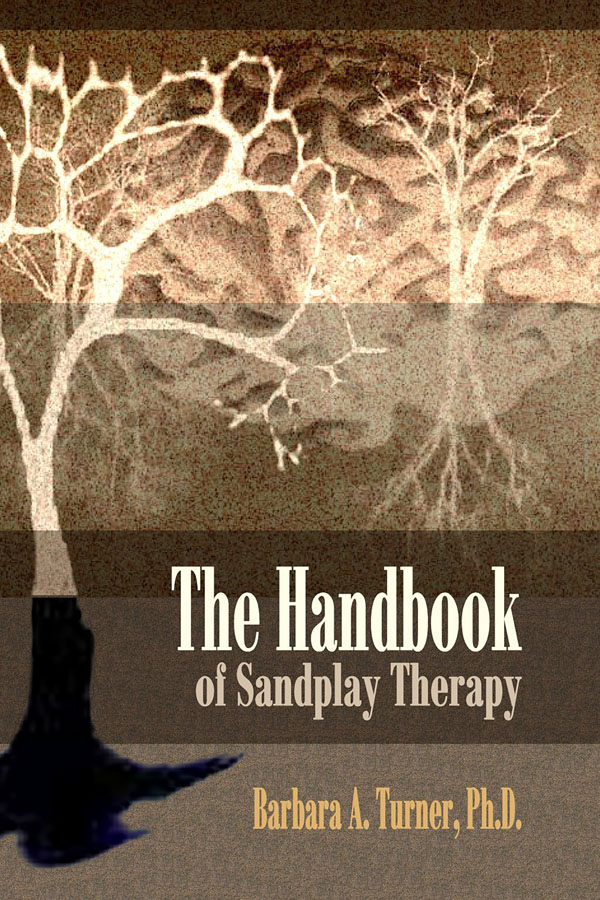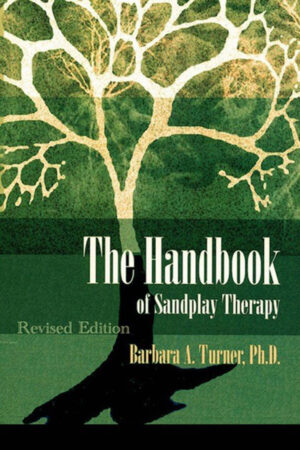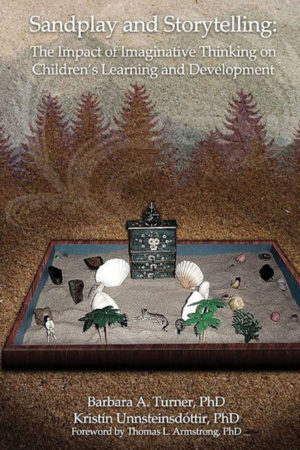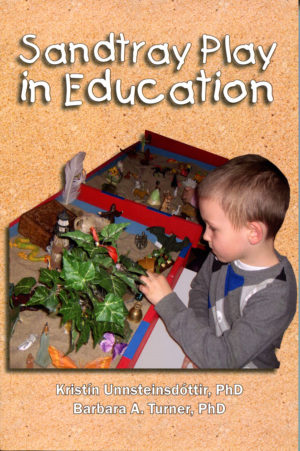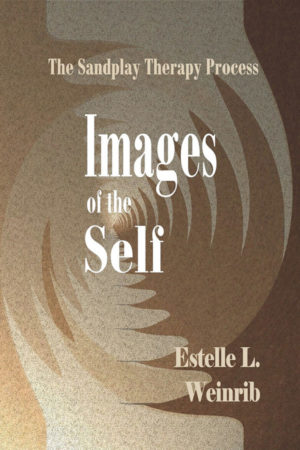Description
Author: Barbara A. Turner, PhD
Now considered a classic in the field, The Handbook of Sandplay Therapy comprehensively explains and illustrates the theory, process and procedures of Jungian Sandplay therapy. Developed as an in-depth text and reference work, The Handbook examines Sandplay from psychological, mythological, and neurobiological paradigms in order to cultivate understanding of how Sandplay brings about change in child and adult patients.
Throughout the author maintains a profound respect for the individual development of the therapist and the qualitative impact of the clinical relationship on the healing and transformational aspects of Sandplay therapy.
Thorough in content and richly illustrated, The Handbook of Sandplay Therapy is a valuable resource for both experienced clinicians and those new to the field.
Barbara A. Turner, PhD is a Sandplay therapist, teacher and consultant. She is a Registered Sandplay Therapist – Consulting Teacher with The Association for Sandplay Therapy, and is a Registered Play Therapist – Supervisor with The Association for Play Therapy.
Soft Cover
752 Pages
ISBN: 0972851739 / 978-0972517-3-2
175 B&W Photos
Publisher: Temenos Press®
Table of Contents
Introduction: Overview of Sandplay Therapy
PART ONE – THEORETICAL CONCEPTS:
- How Sandplay Therapy Works
Chapter 1: The Structure of the Psyche
- The Unconscious
- Consciousness and Being Conscious
- The Conscious and Unconscious in Sandplay
- The Ego
- The Four Functions
- The Persona
- The Shadow
- Archetypes
Chapter 2: The Dynamics of the Psyche
- Individuation and Differentiation
- Compensation
- Adaptation
- Symbol Formation
- The Transcendent Function
Chapter 3: Symbolic Process: How Symbols Work to Heal and Transform Definition of a Symbol
- The Transcendent Function of the Symbol
- Observing Attitude
Chapter 4: The Role of the Therapist in Symbolic Process
Conclusion: PART ONE
PART TWO – PROCESS CONCEPTS:
- Healing and Transformation in Sandplay Therapy
Section I
- Developmental Considerations in Sandplay
Chapter 1: Neumann and Kalff – Developmental Theory in Sandplay
- Erich Neumann’s Theory of Psychic Development
- The First Phase of Psychic Development: The Primal Relationship
- The Primal Relationship in Sandplay: The Mother-Child Unity
- The Second Phase of Psychic Development:
- Separation of the World Parents
- Separation of the World Parents in Sandplay:
- Relationship to the Mother
- The Third Phase of Psychic Development:;
- Centroversion
- Centroversion in Sandplay: The Constellation of the Self
- Ego Development: Formation of the Conscious Functions of the Psyche
- Kalff’s Animal-Vegetative Phase of Ego Development
- Kalff’s Battle Stage of Ego Development
- Polar Opposition in the Transcendent Function
- The Ego-Self Axis
- Kalff’s Adaptation to the Collective
Conclusion: Chapter 1
Chapter 2: Sandplay Therapy and Other Significant Developmental Theory
- J.H. Pestalozzi, J.F. Herbart, Jean Piaget, Sigmund Freud,
- Melanie Klein, Eric Erickson, D.W. Winnicott, John Bowlby,
- Margaret S. Mahler
Conclusion: Chapter 2
Chapter 3: Patterns of Chronological Development In Sandplay
- Laura Ruth Bowyer’s Developmental Norms
- The Interactive Play of Children in Sandplay
- Gender Differences in Sandplay Development
Conclusion: Chapter 3
Chapter 4: Mythological Considerations of Development in Sandplay
- Yggdrasil – The World Tree
- The Three Roots of Yggdrasil and Their Wells
- The Well of the Underworld:
- The Sandplay Process of Transcendence
- The Well of the Underworld in Sandplay
- The Well of Destiny:
- The Sandplay Process of Healing and Remembering
- The Well of Destiny in Sandplay
- The Well of Wisdom:
- The Sandplay Process of Sacrifice
- The Well of Wisdom in Sandplay
Conclusion: Chapter 4
Chapter 5: Neurobiological Considerations of Development in Sandplay
- The Mother-Child Unity and Brain Structure Development in Sandplay
- Early Limbic Development:
- Affect and Relationship in Sandplay
- Early Affect Regulation and The Free and
- Protected Space of Sandplay
- Hierarchical Brain Structure Development and Trauma in Sandplay
- Patterns of Affect Regulation and the
- Development of the Self
- The Creation of Human Mind in Relationship
- and Sandplay
- Myth Making And Mystical Experience
- The Brain’s Drive to Realize Wholeness
- Brain Activity in Mystical States and Symbolic Process
- The Eight Operators of Mystical Experience and Symbolic Process
Conclusion: Chapter 5
- Chart – Comparing Three Paradigms of Psychic Transformation
Conclusion: Section I
Section II Themes in Sandplay Therapy
Chapter 1: Content Themes in Sandplay
- Figures Used in the Sandplay Process
- Sequence of Placement of the Figures
- Number and Color Content of Figures
- Absence of Figures as Content
- The Allegorical Content of Sandplay
- Story and Theme as Content
- Mythic Themes as Content
- When the Story or Theme Appears Stuck
- Traditional Paradigms of Transformation
- The Transformational Paradigm of Alchemy
- Alchemy in Sandplay
- The Transformational Paradigm of the Elements
- The Elements in Sandplay
- The Chakras: Energy Centers as Content
- Sand as Content In Sandplay
- The Nature of Dry and Wet Sand
- The Nature of Water
- Manipulation of the Sand as Content
- Sculptural Formations in Sand
- Sculpted shapes and Figures in the Sand
- Where Earth and Water Meet
Conclusion: Chapter 1
Chapter 2: Spatial Themes in Sandplay
- The Vertical Axis
- Height and Ascent
- Depth and Descent
- The Horizontal Axis
- The Vertical and Horizontal Axes in Sandplay
- The Center
- The Sand Tray and the Center
- Constellation of the Self in Sandplay
- Manifestation of the Self in Sandplay
- Other Fundamental Spatial Configurations in Sandplay
- Considerations of Placement in Sandplay
- Relationship of Figures in Sandplay
- The Client’s Relationship to the Sand Tray
- The Shape of the Sand Tray
- Relationship of Figure Placement to Client and Therapist
- Relationship to the Sandplay Space
Conclusion: Chapter 2
Chapter 3: Motion Themes in Sandplay
- Margaret Lowenfeld’s E
- Quality of Motion and Channel
- Movement of Figures During Construction
- Manner of Construction
- Movement in Psychic Space
- Sprinkling, Pouring, Dropping and Burying Motion
- Movement Between Two Sand Trays
- Interactive Play
Conclusion: Chapter 3
Chapter 4: Affect Themes in Sandplay
- The Affective Core of Symbols
- Dimensions of Affect in Sandplay
Conclusion: Chapter 4
Conclusion: Section II
Section III
Understanding Sandplay Therapy
Chapter 1: Understanding the World Technique: Margaret Lowenfeld
Chapter 2: The World Test: Charlotte Buhler
Chapter 3: Understanding Sandplay Therapy: Dora Kalff
Chapter 4: Other Principles for Understanding Jungian Sandplay Therapy
- Understanding the Sandplay Process: Estelle L. Weinrib
- Guidelines for Understanding Sandplay: Katherine Bradway
- and Barbara McCoard
- The Sandtray Categorical Checklist: Geri Grubbs
- Direct Observation and Objective Analysis
- Subjective Impressions and Implied Meanings
- Twenty Points of Consideration For Understanding
- Sandplay Therapy: Martin Kalff
- The Significance of the First Tray
- Quadrant Theories of Sandplay Analysis
Chapter 5: Subjective Immersion Analysis
Conclusion: Section III
Conclusion: PART TWO
PART THREE – Procedural Concepts
- Implementing Sandplay in the Practice
Section I Before the Sandplay Session
Chapter 1: The Therapist
- Training
- Equipment and Supplies
- The Collection
- Room Preparation
Chapter 2: The Client
- Introducing the Client to Sandplay
- Explaining Sandplay to Adult Clients
- Explaining Sandplay to Parents and Children
- Client Readiness for Sandplay
- Client Resistance to Sandplay
- Frequency of Sandplays
- Integrating Sandplay with Other Therapeutic Modalities
Section II During the Sandplay Session
Chapter 1: The Therapist
- Stance and Stillness
- Record Keeping
- Interaction With the Adult Client
Chapter 2: The Client
- The Client’s Approach to Sandplay
- The Client’s Demeanor During the Sandplay Session
- Children’s Interactive Play
- Interaction with the Child Client
Section III After the Sandplay Session
Chapter 1: Client and Therapist
- Completion of the Sand Tray
- The Client’s Desire to Interpret the Sandplay
- Photographs of the Sandplay
- Leaving Sandplay in Tact
- Showing Sandplay to Parents
Chapter 2: The Therapist
- Disassembling the Sandplay
- Organizing and Managing Sandplay Records
- Carrying the Sandplay
- Sandplay Consultation
Conclusion: PART THREE
Postscript: PARTS ONE THROUGH THREE
PART FOUR – Client Case Examples
The Sandplay Case of Aaron: A Nine-year-old Boy Defines His Masculinity
Appendix A: Subjective Immersion Analysis:
- Transcript of SIA Inquiry into the Sandplay Case of Aaron
Appendix B: The History and Development of Sandplay Therapy
References
Index

